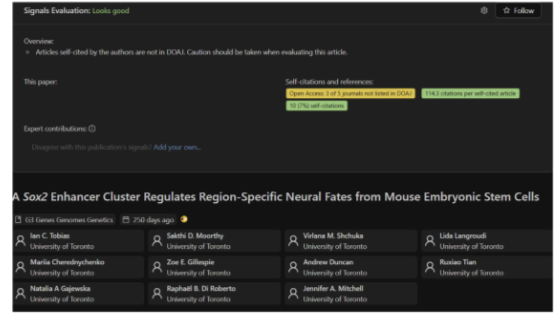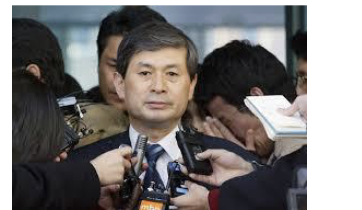Lec 12 - Misconduct and Fraudulent claims
1/29
There's no tags or description
Looks like no tags are added yet.
Name | Mastery | Learn | Test | Matching | Spaced |
|---|
No study sessions yet.
30 Terms
keys to a well-supported scientific argument
1⃣ Makes a focused, challengeable claim.
2⃣ Connects each premise to credible evidence.
3⃣ Explains clearly how evidence supports the claim.
4⃣ Acknowledges gaps and alternative interpretations.
5⃣ Uses qualifying language (e.g., likely, suggests) to add nuance and accuracy.
To critically evaluate a scientific claim, ask:
1⃣ Is the information current and based on recent research?
2⃣ Does the study directly address the question and explain its relevance?
3⃣ Are the authors credible experts with proper training?
4⃣ Is the experiment well-designed, controlled, and unbiased?
5⃣ Are there motivations or conflicts of interest that could affect the results?
Takeaway:
A trustworthy claim comes from relevant, well-designed, unbiased research by qualified experts using up-to-date evidence.
What is a legitimate scientific debate?
A vigorous disagreement about evidence or interpretation that encourages open discussion and helps improve research quality and societal safety.
How can scientific controversy benefit research?
It can reduce potential harms, spark innovation, and lead to better understanding through collaboration and reevaluation of evidence.
What is scientific misconduct?
A deliberate violation of research integrity or ethics, such as falsifying data or ignoring ethical standards, which damages trust and scientific progress.
What is a moratorium in science?
A temporary pause or suspension of a research activity to allow time for ethical, safety, or societal concerns to be addressed.
Famous controversies
IVF Laws → oldest IVF babies are in their 30s we need to watch
AMR - superbugs - changing how we use antibiotics
GMOs
Ancestry testing (selling your account info)
psychotropics for psyc and mood disorder treatment
pain management strategies
The Big Three forms of academic misconduct
Fabrication: making up data or results without conducting the research yourself
Falsification: manipulating research materials, equipment, or data to misinterpret finding
Plagiarism: using others’ ideas, processes, or words without proper credit
Other types of research misconduct
Questionable authorship practises → adding name of important researcher to add weight to their role - also ghost writers not getting credit
Violating research ethics board guidelines → skipping steps
Failure to disclose conflicts of interest → if you are getting private funding it should be mentioned
Bullying and Abuses of Power → research medicine is hierarchal
How can modern technology help detect scientific misconduct?
Through databases and software that identify plagiarism, image reuse, and figure manipulation within manuscripts.
Programs like Research Signals and Proofig are designed to scan research papers for duplicated or manipulated content.
What system does Signals Research Integrity Analysis use to flag potential issues?
A “traffic light” system — green, yellow, or red — to indicate levels of concern about research integrity.
Green: No integrity concerns detected.
Yellow: Possible issues that require closer review.
Red: Significant integrity concerns or likely misconduct.

What is a scientific retraction?
A formal withdrawal of a published paper by a journal due to serious errors or misconduct that invalidate its findings.
Who runs Retraction Watch and what does it do?
Retraction Watch is a community organization that monitors, tracks, and reports on retracted scientific papers and the reasons behind them.
Do authors always agree to retract their papers?
Not always — some resist retraction, and journals may need to pressure or enforce withdrawal when misconduct or major errors are confirmed.'
publishes all retracted articles
we are starting to point out articles that were written by chatgpt
Who was Andrew Wakefield and what was his fraud about?
Known as the “father of the anti-vaccine movement,” Wakefield’s 1998 paper falsely linked vaccines to autism. It was retracted, he lost his medical license, and his fraud was exposed between 2004–2010.

Who was Hwang Woo Suk and what happened to him?
A South Korean cloning researcher found guilty of fraud and embezzlement (2006–2008). He had three papers retracted, was criminally charged, and dismissed from Seoul National University.
he pocketed researcg money and didnt use human embryo

What was Piero Anversa known for, and what were the consequences?
A Harvard researcher who fabricated data about heart stem cells. Investigations (2014–2018) found fraud and falsification in his work, leading to 31 retractions and termination from Harvard.

What did the University of Minnesota researchers Karen Ashe and Sylvain Lesne claim about amyloid beta (Aβ56)?
They claimed that administering Aβ56 directly caused memory loss in rats, suggesting it played a key role in Alzheimer’s disease.
It caused a massive funding shift, with amyloid research support growing from $0 in 2006 to $287 million by 2021, and led to hundreds of clinical trials testing amyloid-targeted therapies.
It was read by tens of thousands and cited over 2,500 times, deeply influencing Alzheimer’s research worldwide.
Aduhelm, Leqembi, and Kisunla — all based on the amyloid hypothesis, despite growing concerns about data reliability.
What is amyloid beta (Aβ) and where is it produced?
Amyloid beta (Aβ) is a peptide naturally produced by brain cells, which can accumulate outside neurons to form amyloid plaques that gradually damage brain tissue.
What role do amyloid plaques play in Alzheimer’s disease diagnosis?
They are one of the two hallmark pathologies required for a definitive Alzheimer’s diagnosis, along with neurofibrillary tangles.
Is there strong evidence that stopping amyloid plaque formation treats early Alzheimer’s?
No — there is no definitive evidence that halting plaque buildup can effectively treat or slow early-stage Alzheimer’s disease.
What did Lesné et al. (2006) claim in their Nature study?
They claimed a soluble amyloid-beta assembly (Aβ*) caused temporary memory loss in rats, even without plaque formation or neuron death — suggesting Aβ* might be an early diagnostic target.
It suggested that soluble Aβ*, not plaques, might trigger early Alzheimer’s symptoms, influencing years of research focus and funding on amyloid-targeted therapies.
Who first raised concerns about the validity of Lesné’s Aβ*56 research?
Matthew Schrag, a neuroscientist at Vanderbilt University, whose own research contradicted anti-amyloid drug benefits.
He found image manipulation, including cut marks and duplicated image parts, used to falsely make Aβ*56 appear more abundant in older mice.
He filed formal complaints to the NIH and FDA, warning that the findings could mislead an entire field and urging that ongoing clinical trials be halted
How many papers by Lesné showed evidence of manipulation?
Approximately 20 papers contained evidence of copy-paste tampering and image falsification.
How much funding was directed toward amyloid-focused Alzheimer’s research?
Over $280 million in government funds and billions more from pharmaceutical companies, across 1,600+ Alzheimer’s clinical trials.
What was one major consequence of the Aβ*56 research scandal?
It misdirected enormous resources and caused the neglect of alternative research approaches that might have been more effective.
Why did many researchers begin doubting the Aβ56 findings?
Because other scientists couldn’t replicate the results, yet early media coverage exaggerated its importance, calling Aβ56 a “prime suspect” in Alzheimer’s.
How many participants have taken part in Alzheimer’s clinical trials, and what concern has been raised?
Over 500,000 participants have been involved, with many potentially exposed to unnecessary risk due to flawed or misleading research foundations.
What eventually happened to Lesné’s 2006 Nature paper?
It was formally retracted 18 years later after lead investigator Karen Ashe agreed to the retraction.
Aβ*56 Alzheimer’s Research Fraud Case summary
A major scientific misconduct case involving Sylvain Lesné and Karen Ashe at the University of Minnesota, whose 2006 Nature paper falsely claimed that the amyloid beta peptide (Aβ*56) caused memory loss in rats.
The study’s influence led to billions in funding and over 1,600 Alzheimer’s clinical trials, most of which failed to replicate results.
In 2022, neuroscientist Matthew Schrag uncovered image manipulation—including duplicated and altered figures—sparking investigations by Science and the University of Minnesota.
The paper was retracted in 2024, and Lesné resigned in 2025.
The scandal revealed the dangers of unchecked bias, weak peer review, and overreliance on a single flawed hypothesis, but also demonstrated science’s ability to self-correct through transparency and retraction.